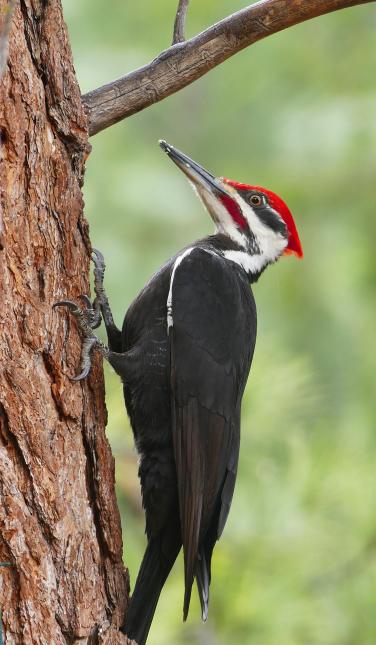Understanding Woodpeckers in Florida: Behavior, Variety, and Environments
Understanding Woodpeckers in Florida: Behavior, Variety, and Environments
Blog Article
Unveiling the Secrets of Woodpeckers: Behavior, Environment, and Much More
Woodpeckers, with their unique behaviors and specialized adaptations, have actually lengthy interested scientists and nature lovers alike. By revealing the enigmas surrounding woodpeckers' habits and environment options, a much deeper understanding of these bird marvels arises, offering a peek right into their fascinating world.
Woodpecker Actions Insights
In examining woodpecker habits, a remarkable display of specialized skills and adjustments emerges, clarifying their exceptional environmental specific niche - Woodpeckers in Florida. Woodpeckers, recognized for their distinctive drumming on trees, possess a range of behavioral qualities that contribute to their survival and success in their atmosphere. One vital actions is their drumming, which serves several purposes such as communication, establishing region, bring in mates, and locating food sources. This balanced pecking also showcases their remarkable toughness and endurance, as they can hammer away continuously at high rates without creating harm to themselves.
Moreover, woodpeckers show an unique feeding actions characterized by their capability to extract insects from tree bark using their specialized beaks. Their lengthy, barbed tongues help in capturing victim, while their strong neck muscles provide stability and precision throughout pecking movements. This feeding strategy enables woodpeckers to access hidden insect larvae and remove them with impressive performance.
Habitat Preferences and Option
What factors influence the environment preferences and choice of woodpeckers? One important variable affecting woodpecker environment option is the schedule of suitable nesting websites. Woodpeckers normally choose woodlands with a mix of mature trees that provide enough possibilities for tooth cavity excavation.
In addition, woodpeckers reveal a choice for environments with a bountiful supply of food sources. They are mostly insectivorous, eating beetles, ants, larvae, and various other insects found in rotting timber or tree bark. For that reason, woodpeckers often tend to prefer woody areas with a diverse insect populace to fulfill their nutritional requirements.
In addition, the presence of dead or worn out trees is an additional key consider woodpecker habitat selection. These trees not only offer food resources however also use appropriate substratum for tooth cavity excavation. Dead trees are important for the upkeep of healthy woodpecker populations, as they play an important function in the woodpeckers' life process and ecological community dynamics.
Feeding Habits and Diet Regimen Composition
Woodpeckers demonstrate a specialized feeding actions focused on foraging for insects within numerous habitats. In enhancement to bugs, woodpeckers also eat tree sap, fruits, nuts, and seeds, including range to their diet plan depending on the season and schedule of food sources.
The foraging methods of woodpeckers are well-adapted to their arboreal way of living (Woodpeckers in Florida). Their ability to dig deep into timber not only supplies them with food yet additionally aids in producing nesting dental caries and establishing territories. Woodpeckers play a critical duty in keeping the wellness of forests by managing insect populaces and assisting in the disintegration of timber. Comprehending their feeding habits and diet plan make-up is vital for conservation efforts targeted at preserving these unique and beneficial birds.
Drumming Seems and Communication
Using quick drumming audios on different surface areas, woodpeckers employ a distinctive form of communication to signify area boundaries and bring in mates. This drumming actions is not only a way of interaction but additionally works as a method for woodpeckers to establish their existence within a specific location. The strength, rate, and pattern of the drumming can share crucial information to other woodpeckers around.
Woodpeckers utilize drumming noises to my company reveal their visibility in a region and to advise off potential intruders. The loud and recurring nature of the drumming acts as a clear signal to various other woodpeckers that the location is currently declared. This helps in lowering problems and decreasing physical battles between people.

Survival Adaptations and Specialized Composition

Verdict
In final thought, woodpeckers exhibit special habits, such as drumming sounds for interaction, and have actually specialized makeup for survival in their selected environments. Their feeding behaviors and diet regimen composition better show their versatility to numerous atmospheres. By recognizing these aspects of woodpeckers, researchers and preservationists can much better secure and preserve these fascinating birds and their click here now communities.
Report this page